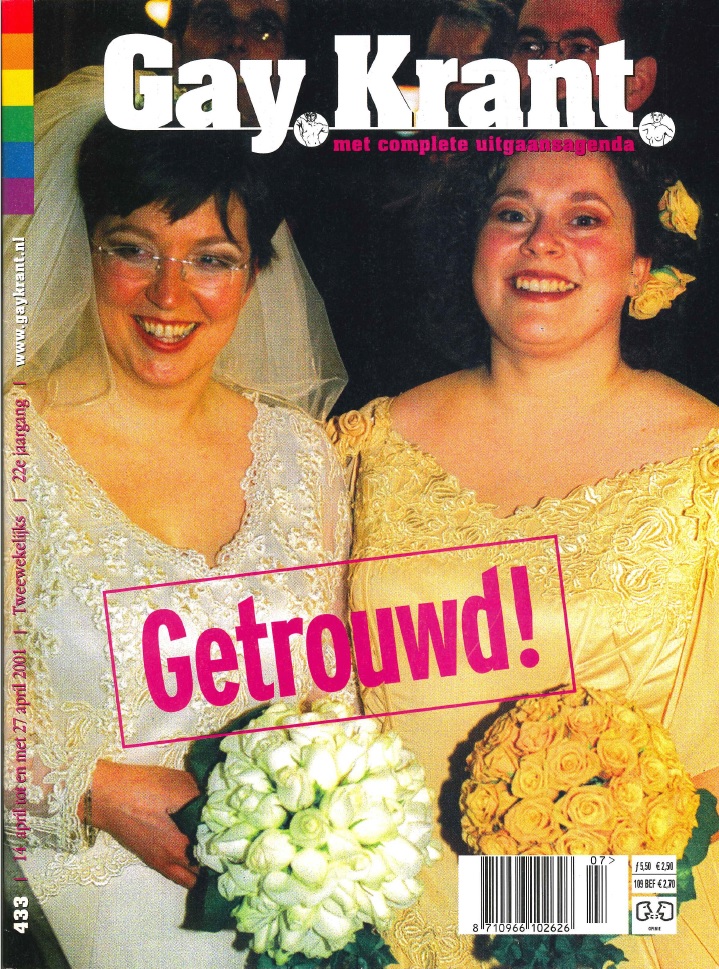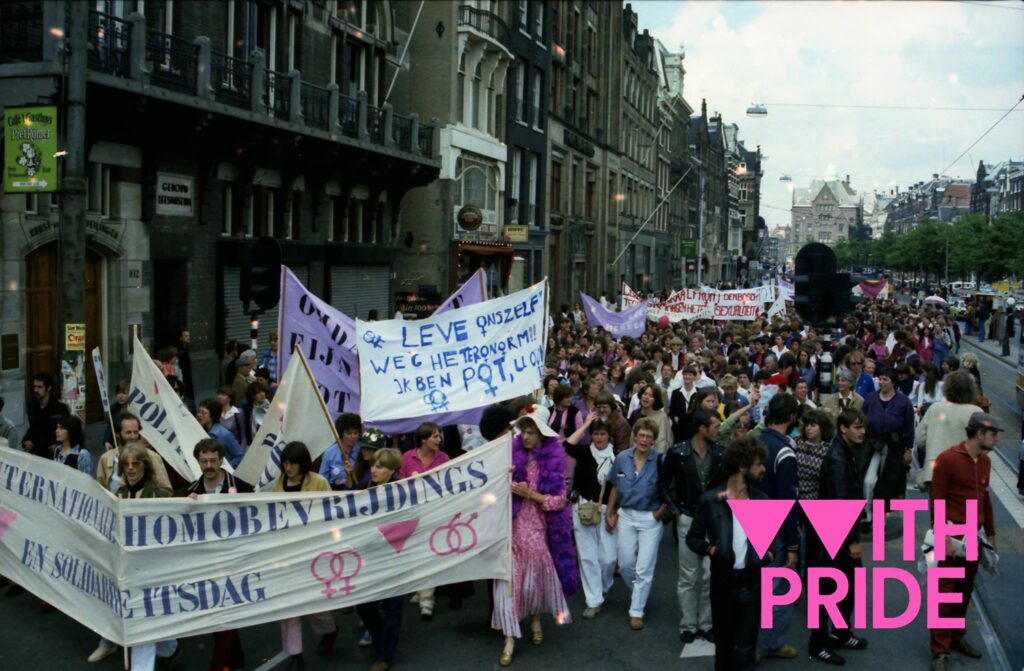On the 31st of march 2001, history was written in the city hall of Amsterdam. The first legal gay marriages had just been performed as the world watched the Netherlands in awe. The event had been in the making for a long time and press from all over the world came to report on this ground-breaking ceremony which ushered in a new era for queer people. They finally had the same rights as anybody else, at least in the Netherlands, and were no longer treated as a second rank citizen.

This momentous event would go into the history books and solidified Amsterdam as the gay capital of the world. But what about all its forerunners?
The queer friendly identity of Amsterdam (and of the Netherlands in general) didn’t just happen overnight, it had been an uphill battle, fought with protests, flyers, books, art, film and music. The IHLIA LGBTI Heritage organisation has tasked themselves with archiving queer-related books, magazines, documentaries, flyers, buttons, photo’s and other important pieces that relate to the LGBTI community and it’s history. It’s a place of safekeeping, guarding what at one point in time was considered vulgar material and exhibiting their pieces to the greater public. If it’s queer, they’ve got it here.
The organisation stated in 1978 with the creation of Dokumentatiecentrum Homostudies which soon got abbreviated to the much catchier “Homodok”. This organisation started when the University of Amsterdam started a course names “homostudies” in which students were asked to organise and archive the hard to find queer data that was already at hand in the university’s library. This spurred an ever-growing archive and in 2000, Homodok merged with the Lesbisch Archief Amsterdam and the Anna Blaman Huis in Leeuwarden to form IHLIA LGBTI heritage. Now it has it’s own floor in the Openbare Bibliotheek Amsterdam (the Public Library of Amsterdam) on the Oosterdok so that there is no excuse for the public not to come and visit them.
For IHLIA the time of lurking in the shadows has passed as it has become a staple in the Amsterdam research facilities. This becomes obvious when you look at the partnerships that they have taken on. Obviously they have a very close partnership with the OBA but they also work with the Municipality of Amsterdam, as well as the national ministry of education, culture and science. Which goes to show that the archiving of queer data and protecting the freedom to be who you are, is not only an important part of the identity of Amsterdam, but also that of the Netherlands. And even after all that time they still work together with the University of Amsterdam, where it all began.
If you need to polish up on your queer history, IHLIA LGBTI Heritage has got you covered. With over 100.000 objects and articles at their disposal, they have the largest LGBTI collection of Europe but if that isn’t enough and you wish to be emerged into a complete setting, you can always go and visit one of their many expositions.

Their most famous exposition opened in 2018 with the celebration of their 40th anniversary. ‘With Pride’ shows the viewer how the ever-ongoing campaign for equality has changed in the last forty years and what aspects of it have remained the same. It is meant to make the public think about their lives and reflect on questions as ‘what has this campaign gained us?’ and ‘what should we strive to achieve?’. The exhibition is also meant to point out that the emancipation of the LHBTI community isn’t just a battle of a minority by, and for their own people, it’s a public social issue that can benefit everybody. Originally nestled in the OBA, all library users were able to come and see the exposition, to broaden their horizon and learn about Purple September, how Amsterdam handled the AIDS crisis and how Amsterdam Pride came to be.
As you might have noticed from this brief description the focus of ‘With Pride’ lies mainly on Amsterdam which it has been criticized for in the magazine for genderstudies. Even though Amsterdam might have been a focal point in the Dutch queer emancipation battle, the battle has indeed been fought all over the Netherlands.
The reason for this one-sidedness might have been that IHLIA LGBTI Heritage used their own archive to pick and choose from to form the exposition. And since IHLIA is an assembly of multiple organisations that were located in, and focussed on Amsterdam before they merged, the fixation on the city’s queer heritage does not come as a surprise. The fact that it is solely catered to a Dutch audience certainly is remarkable since Amsterdam has such a large amount of international, non Dutch speaking inhabitants. But that isn’t it’s only curiosity The focus on Amsterdam might be logical if ‘With Pride’ was only on display in Amsterdam itself, but it is in fact a traveling exhibition. Even more surprisingly, it’s rentable.
So if you wish to take a deep dive into the queer culture of Amsterdam, even if you are unable to take a trip to the city, just give the IHLIA LGBTI Heritage a call. I’m sure they can work it out.
Robin Kissels, 10557555